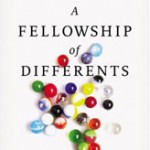Thanks for joining me for another installment of “Walking with Jesus through Lent.” During this season of the church year, comprised of the roughly forty days between Ash Wednesday and Easter Sunday, Christians focus on the themes of repentance, mortality, and the need for salvation. Many Christians fast from certain pleasures during this time in order to demonstrate repentance or grow in faith. For Lutherans, this practice is not mandated but may be a helpful one for certain believers. To help us focus on the themes of Lent, this year I’ve chosen to meditate on the Gospel readings from the Revised Common Lectionary. Whether you are a longtime believer or a skeptic, I’m happy to have you along for the journey and for the opportunity to share with you these powerful passages from the life of Christ.
If you need to catch up, you can read the first post here and the second post here.
First off, my apologies for getting this post up late (and for much radio silence in general recently). Last week, I was deep in a lengthy editing project and was frankly exhausted by the time the weekend rolled around. After some rest, I’m ready to get back to the Lenten Gospels and to blogging in general.
Our reading for this week is found in John 2:13-22. It recounts John’s version of Jesus’s cleansing of the Temple in Jerusalem.
First off, let’s get something out of the way. I don’t want to spend an inordinate amount of time on this, but I do want to mention it. Matthew (21:12-13), Mark (11:15-17), and Luke (19:45-46) recount the cleansing of the Temple much later in the biblical narrative than does John. While all the narratives point to the cleansing happening sometime around the celebration of Passover, only the Synoptics (Matthew, Mark, and Luke) place it shortly before Jesus’s death and resurrection. Scholars are divided as to whether there were two Temple cleansings or only one. I think a variety of options are available to us. There is some evidence that would suggest there were in fact two Temple cleansings. [Note: I’m linking to a writer there with whom I certainly do not agree about everything, but who summarizes this side of the argument decently.] Another option might be that John arranges his material thematically rather than chronologically. This might resonate well with John’s circular–rather than linear–manner of discussion. In other words, we already know that he doesn’t use Western cultural modes of communication but, rather, Eastern ones. It would not be a huge leap to suggest that he arranged his material thematically. Another possibility might be that either the Synoptics or John are incorrect about the timing but correct about the essence of what happened.
So, yes, there is an issue of how to harmonize or understand how the different accounts relate to one another, but I think we’d be missing the point of the story if we spent all of our time locked in on that issue. What I want to spend our time on here is the essence on what is happening. To do that, let’s jump forward in time for a moment.
A huge problem in the evangelical church in American today is the commodification of faith. Steven Curtis Chapman, a popular Christian singer wrote a song (“The Change”) about this a while back:
Well I got myself a T-shirt that says what I believe
I got letters on my bracelet to serve as my ID
I got the necklace and the key chain
And almost everything a good Christian needs, yeahI got the little Bible magnets on my refrigerator door
And a welcome mat to bless you before you walk across my floor
I got a Jesus bumper sticker
And the outline of a fish stuck on my car
Chapman goes on to say that if we have all these products and aren’t living lives that are being changed by Christ, there’s a huge problem.
Another musician who happens to be a Christian recently talked about how Christian Contemporary Music (CCM) turns articulations of faith into products. This is what Lecrae told The Atlantic last year:
The exploitation of believers just to turn a profit—so you care less about making a quality product, you just want to keep telling the same stories and repackaging them over and over just to exploit people—I have a problem with that.
Lecrae’s point is that such commodification is really bad for art. But I think we can draw another conclusion from his words as well. Commodification is also really bad for religion. Commodification means that we take the free gift of God and turn it into a product to be sold. It means excluding people who can’t afford the price of entry. It means hierarchy instead of welcome. It means we ultimately define ourselves by our own works (and by our own purchase of products) instead of by the free gift of God’s grace. It’s, frankly, soulless.












